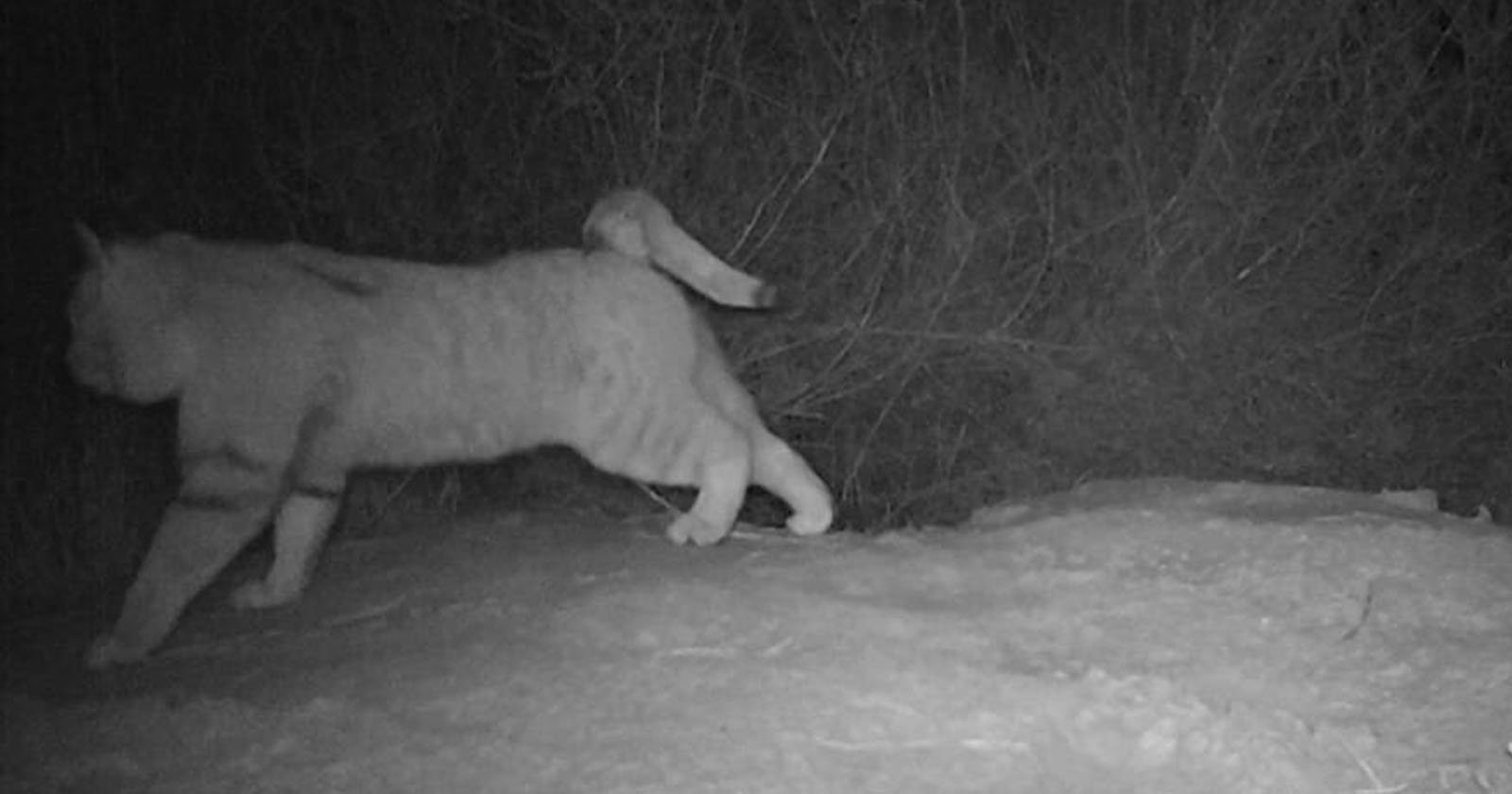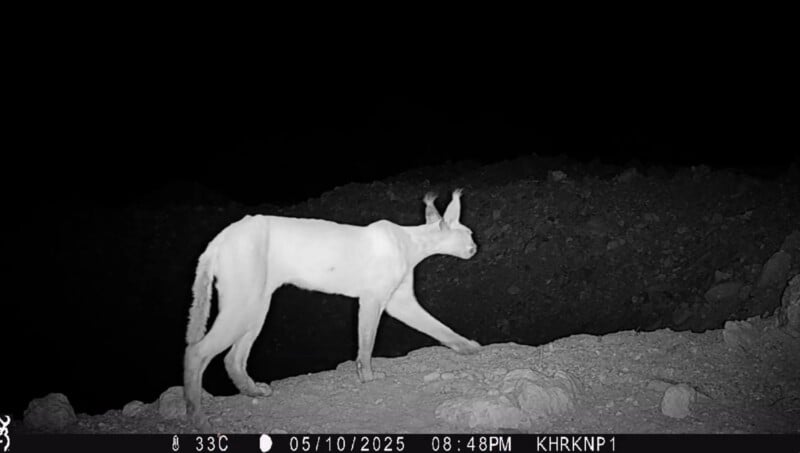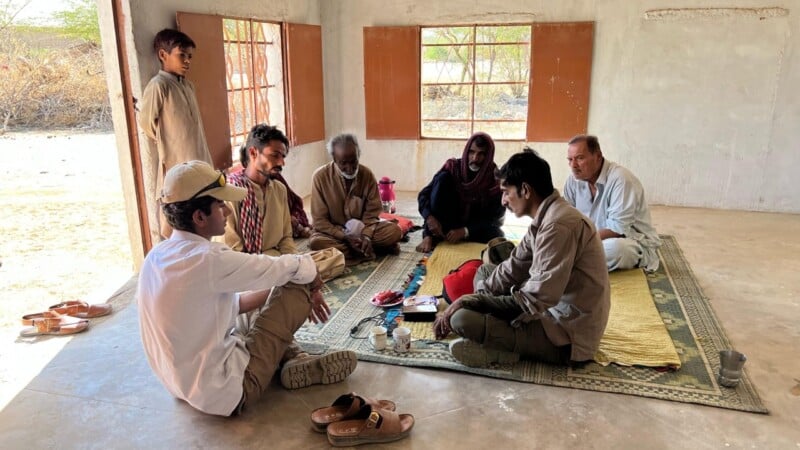Trail Camera Captures ‘Possibly Extinct’ Sand Cat

Camera traps have captured two rare big cats in Pakistan — one of them was thought to be possibly extinct.
Mongabay reports that the Indus Fishing Cat Project captured images of an Asiatic caracal and a sand cat. Very little is known about the Pakistani sand cat, the smallest of all wildcats, and is listed as “possibly extinct” by the International Union for Conservation of Nature (IUCN).
Sand Cats are the size of a house cat and are hard to track, thanks to their desert habitat. “The sighting of the sand cat in Pakistan is highly significant from both ecological and conservation perspectives since the species was practically unknown this far east of its range,” says director of the Indus Fishing Cat Project, Zafeer Ahmed Shaikh.
Shaikh tells Mongabay that a confirmed photographic sighting is extremely valuable because sand cats are poorly documented in the region. “Pakistan lacks comprehensive data on its distribution or population status,” he adds.

The Indus Fishing Cat Project also captured a very rare photo of an Asiatic caracal. Shaikh says that the species was once widespread but is now “rapidly declining.”
The images come from Kirthar National Park in the province of Sindh, close to Hyderabad, where Shaikh and his team have had camera traps set up for roughly four years.
After a report that a caracal has crossed a road in broad daylight in that area, a trail camera was deployed next to a nearby watering hole. Out of 400 videos taken at this location across a two-week period, only one video showed a male caracal. There was another sighting of a juvenile cat, but unfortunately, it showed the feline being killed by local people.
Caracals are far more common in Africa and are not considered particularly threatened globally. But in Pakistan, caracals are listed as critically endangered, and there may be less than 100 individuals.
Environmental Threats
Kirthar National Park, located on the outskirts of Karachi, is facing mounting pressure from human activity, particularly sand mining, according to Shaikh.
Karachi is the twelfth largest city in the world and expanding rapidly. Khar Centre, where the caracal was recently photographed, is among the areas affected by sand and gravel extraction. This activity poses a threat to local wildlife, including small cats, by disrupting habitats, polluting water sources, and generating noise.

In addition to habitat degradation, retaliatory killings remain a major threat to small wildcats across Pakistan. Shaikh’s organization is currently focused on mitigating this issue by engaging with local communities. “Our goal is to expand on existing awareness programs as well as to create a solid foundation for a compensation scheme in the region,” he tells Mongabay.
Globally, small wildcats receive only a fraction of the resources allocated to big cat conservation. “Small wildcats are far from the priority species or wildlife groups of most wildlife conservation bodies in Pakistan,” adds Shaikh. “These species go by unnoticed very easily, and thus, this creates huge research gaps and conservation issues that must be addressed soon.”
He hopes that the recent photographic evidence will help spark scientific interest and encourage greater involvement from both authorities and the public in protecting Pakistan’s lesser-known wildcat species.
Source link



